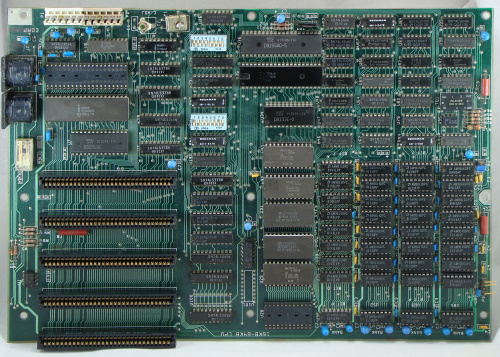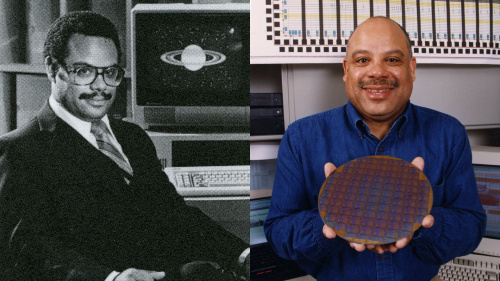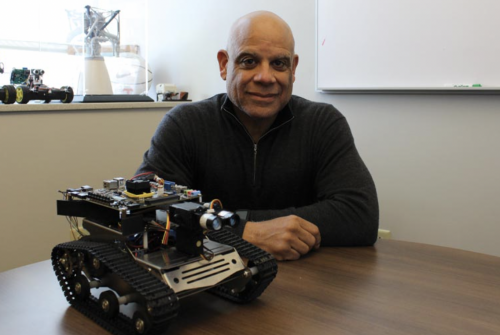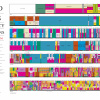Prior to 1980, IBM had mainly been known for manufacturing computers for businesses to use, and they were falling behind in the market for at-home microcomputers where companies like Apple, Tandy and Commodore were excelling. Other large companies like HP were starting to enter the space, and IBM buyers were buying Apple devices for at-home computers. IBM got to work with designing the first PC.
Mark Dean is an inventor and engineer who had a long career with IBM. During that time, he was part of the race to design the first personal computer and holds three of the nine patents associated with IBM's first PC.
Mark Dean via @IBM on Twitter
Dean was born in Jefferson, Tennessee in 1956. From a young age, he had a love for building things, and even built a tractor from scratch with the help of his father. Dean excelled in many different areas, standing out as a gifted athlete and a high-achieving student. In 1979, he graduated at the top of his class from the University of Tennessee, where he studied Electrical Engineering. He went on to earn an MS in Electrical Engineering from Florida Atlantic University in 1982, then a PhD in Electrical Engineering from Stanford University ten years later.
When Dean joined the industry working for IBM, computers were just moving to screen-based displays from punch cards, and his first job with the company was developing a word processor adapter for their Datamaster terminal. Personal computers were becoming increasingly popular with consumers, and IBM wanted to be a part.
Dean's first big invention at IBM was integral to the first PC. He lead the team that invented the Industry Standard Architecture (ISA) system bus, a piece of hardware that works as a communication system between parts of the PC. The first iteration was an 8-bit bus based on the I/O bus of the IBM System/23 Datamaster. A 16-bit version was then introduced with a later release of the PC in 1984. With this device, you could expand PCs with memory, disk drives, printers or monitors, and it greatly increased the usability of the PC.

The IBM PC

The first IBM PC's motherboard
His groundbreaking work didn't stop there -- Dean's further research at IBM worked to greatly improve both the power and accessibility of the personal computer. At the time, PC displays were limited to black and white screens tethered to computers with limited processing power. His work led to the development of the color PC monitor and, in 1999, Dean led a team of engineers at IBM's lab in Austin, Texas to create the first gigahertz chip -- a revolutionary piece of technology that can do a billion calculations a second.
Dean holds three of the IBM's original nine PC patents and, in total, has more than 20 patents associated with his name. In 1996, he was the first African American to be named an IBM fellow. A year later, he received the Black Engineer of the Year President's Award and was inducted into the National Inventors Hall of Fame. In 2001, he was chosen to be a member of the National Academy of Engineers.
Dean retired from IBM in 2013 after holding many positions there, including the CTO of IBM Middle East and Africa. He returned to academia and is the John Fisher Distinguished Professor in the Department of Electrical Engineering and Computer Science at the University of Tennessee.
Dean with a smart robot at the University of Tennessee
Next time you use your PC, think about Mark Dean and all the other scientists, inventors and engineers who have had a hand in the amazing technology we can now hold in our hands so easily.
Stay tuned throughout the rest of this month to learn about more black scientists and engineers whose life and work deserve a spotlight, and let us know who has inspired you on Twitter, Instagram, Facebook or LinkedIn!













